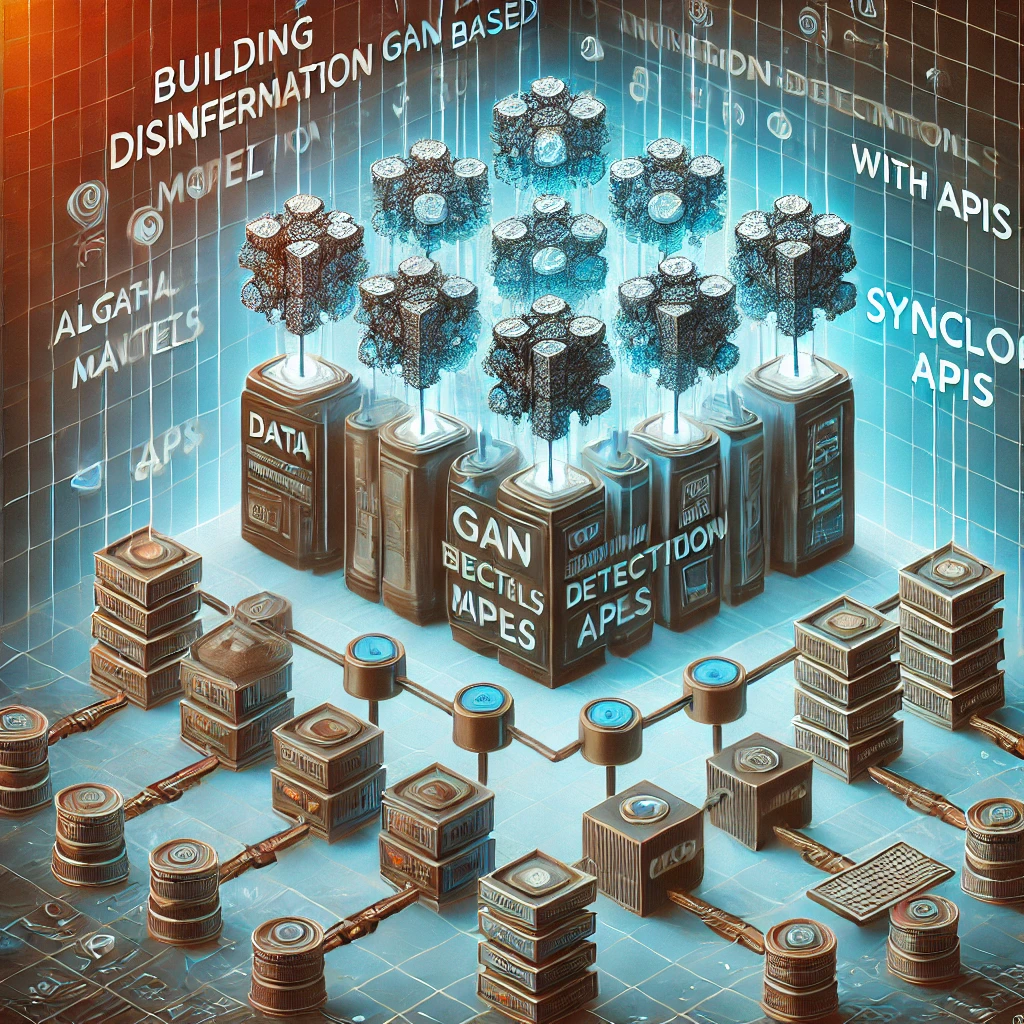Building GAN-Based Disinformation Detection Models with Syncloop APIs
Posted by: Rupesh | December 24, 2024

Building GAN-Based Disinformation Detection Models with Syncloop APIs
Understanding GANs and Their Role in Disinformation Detection
GANs consist of two neural networks:
- Generator: Creates synthetic data, mimicking real-world content.
- Discriminator: Evaluates data authenticity, distinguishing real content from fake.
Together, these networks refine each other, making GANs particularly powerful for detecting and understanding disinformation patterns.
How Syncloop Enhances GAN Development
- Simplified API Management Syncloop APIs offer intuitive tools for defining and managing endpoints that interact with GAN components, streamlining data flow and integration.
- Advanced Workflow Automation With tools like Transformers and IfElse, Syncloop allows seamless automation of data preprocessing, model training, and inference workflows.
- Real-Time Monitoring and Analytics Syncloop’s real-time analytics provide insights into GAN performance, enabling continuous optimization.
- Secure API Deployment Built-in security features ensure that GAN-based APIs are protected from misuse or malicious attacks.
Steps to Build GAN-Based Models with Syncloop APIs
1. Define API Objectives and Architecture
- Objective: Identify disinformation by analyzing text, images, or video content.
- Architecture: Use Syncloop APIs to manage data flow between the generator, discriminator, and other components like preprocessors.
2. Dataset Preparation
- Collect and preprocess datasets of real and fake content.
- Use Syncloop’s Transformers to standardize and validate data formats.
3. Build and Train the GAN Model
- Define endpoints for training the generator and discriminator.
- Automate training workflows using Syncloop’s IfElse and Await control structures to handle conditional logic and asynchronous tasks.
4. Evaluate Model Performance
- Deploy endpoints for testing GAN output against validation datasets.
- Use Syncloop’s monitoring tools to track metrics like accuracy, precision, and recall.
5. Integrate with Existing Systems
- Develop APIs for integrating GAN-based detection into content moderation tools or social media platforms.
- Leverage Syncloop’s integration features to connect with third-party services.
6. Deploy and Monitor the API
- Use Syncloop’s deployment tools to release the API in production environments.
- Continuously monitor API performance and refine the model based on analytics.
Use Case: Identifying Fake News with GANs and Syncloop
- Data Preparation Collect a dataset of authentic and fabricated news articles. Use Syncloop APIs to preprocess and annotate the data.
- Model Training Train a GAN to generate synthetic fake news and improve the discriminator’s ability to identify disinformation. Automate training workflows with Syncloop.
- Real-Time Detection Deploy an API that analyzes incoming articles in real time, flagging potentially fake content for review.
- Performance Optimization Continuously monitor and update the model using Syncloop’s analytics and versioning tools.
Best Practices for Using Syncloop APIs in GAN Development
- Start with Clear Objectives Define the specific disinformation detection goals before building the API.
- Ensure Data Quality Use Syncloop’s validation tools to maintain high-quality datasets for training GAN models.
- Secure API Access Implement authentication and encryption to protect the API and sensitive data.
- Optimize Workflows Leverage Syncloop’s control structures to automate repetitive tasks and streamline processes.
- Monitor Continuously Use real-time analytics to track API performance and identify areas for improvement.
The Future of GAN-Based Disinformation Detection with Syncloop
- AI-Driven Enhancements Incorporate advanced AI models to further refine GAN outputs and detection accuracy.
- IoT and Edge Integration Expand detection capabilities to IoT devices and edge computing environments using Syncloop.
- Scalable Solutions Leverage Syncloop’s scalability to handle growing volumes of disinformation detection tasks.
- Collaborative Tools Enable collaborative API development and deployment for teams working on disinformation detection.
Conclusion
Building GAN-based disinformation detection models using Syncloop APIs is a powerful approach to addressing the challenges of fake content in the digital age. By leveraging Syncloop’s advanced tools and best practices, developers can create scalable, secure, and effective solutions to combat disinformation.
An illustration of a GAN model pipeline integrated with Syncloop APIs, highlighting the roles of the generator, discriminator, and real-time monitoring.
Back to Blogs